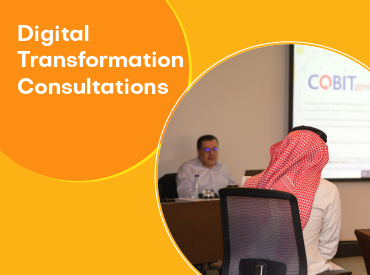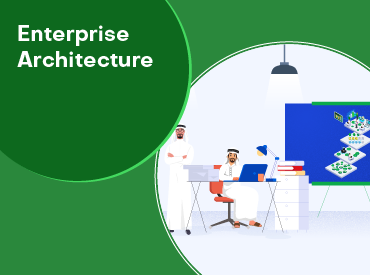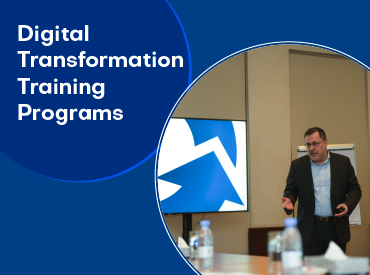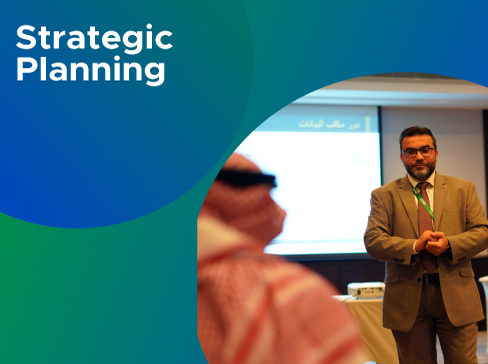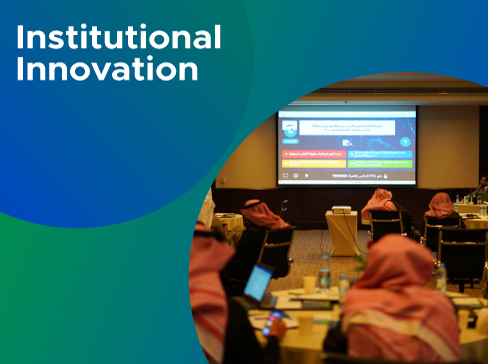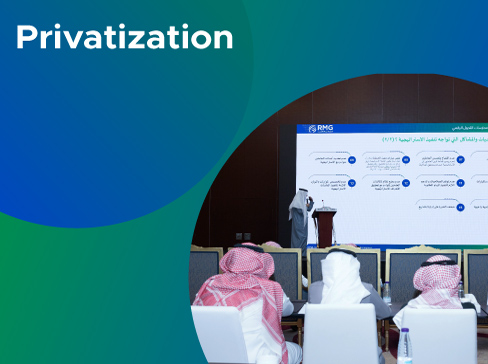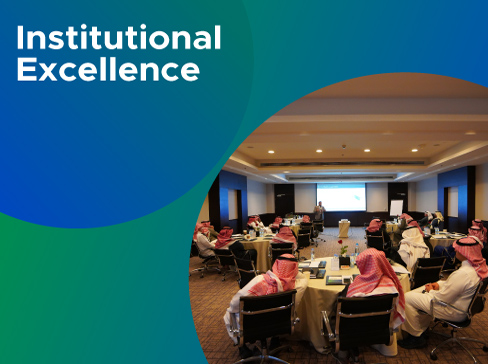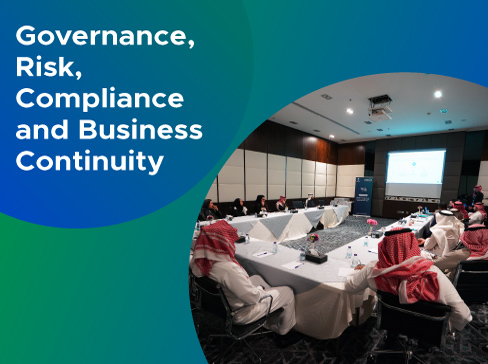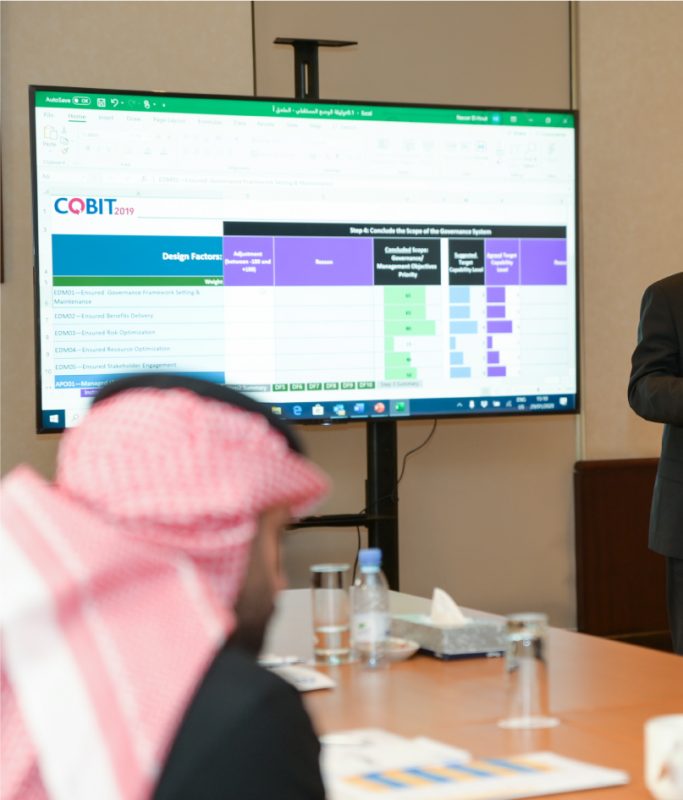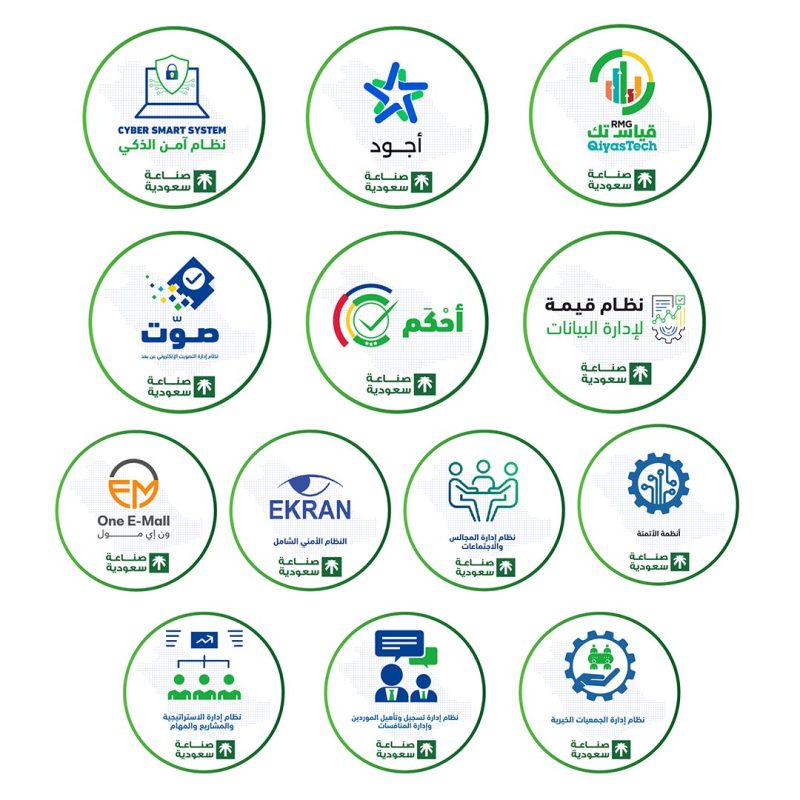The challenges facing enterprises, the way they are managed, and the speed of business changes lead many governmental and non-governmental organizations and private companies to rely on the best administrative methods and practices in order to benefit from them in developing their business and activities.
The rational government of the Kingdom of Saudi Arabia has sought to develop the performance of its government agencies, including ministries, agencies, and organizations with all specializations, and transform them into a digital government based on best practices by achieving the Kingdom’s Vision 2030, through legislation and policies, establishing an enterprise architecture office in each entity, and preparing a digital transformation plan. Therefore, it was necessary to adopt the concept of enterprise architecture as a basic enabler of digital transformation.
What is Enterprise Architecture?
A set of practices and controls concerned with implementing the organization’s vision and strategy by making the necessary changes to align business objectives and procedures with the information technology it uses to achieve this vision. In general, the enterprise architecture consists of an integrated work system of components and parts (including the administrative, organizational, procedural and technical structure) that interact with each other in order to achieve unified goals.
The enterprise architecture serves several goals, namely establishing compatibility with regulations and legislation and alignment with the plans and policies of relevant authorities. It is an analytical tool to provide modeling capabilities at all levels and clearly draw relationships and dependencies between all major areas (business, applications, data, and infrastructure) where information technology is used to serve the business and thus achieve the goals of this organization.
And also a planning tool to translate strategic thinking into a roadmap for future development and integration. A change management tool to provide a framework for synchronizing and coordinating development activities across multiple development projects and initiatives. Enterprise architecture is considered a best practice because its application contributes to documentation, analysis, planning, modeling, and transformation governance.
What services does the enterprise architecture provide?
The most important services provided by the Enterprise architecture are:
- Achieving business strategy, vision and targeted operating model
- Improving business processes
- Enable understanding of strategic outcomes for each project
- Implementing administrative planning standards in coordination with project management
- Provide high flexibility to change by facilitating faster decision-making and avoiding the need for long studies (customizing decision-making strategies)
- Analyzing the gap between the current situation and the desired (future) situation
- Enhancing IT security
- Measuring maturity and ability to adapt technology
- Risk assessment from a technical perspective
- Providing a special perspective for all employees of the organization:
Senior management: By making use of documents produced in an understandable and evaluable way to help them make decisions
Middle Management: By providing knowledge of how business operates in an organized and understandable manner
Employees: By creating a simple concept that facilitates their work using technologies
Human Resources: Through understanding roles and skills
Information Technology: By properly understanding needs and adapting available technology to serve the business
Partners: When the procedures and services are described in an organized and systematic manner, the partners can make the appropriate decision to approve them
Customers (beneficiaries): By understanding the nature of the services provided to them and benefiting from them to the fullest extent.
How to establish an Enterprise Architecture Office?
We will list the mechanism for establishing and operating the Enterprise Architecture Office in a simplified manner. In its establishment, the Enterprise Architecture Office relies on applying clear steps of the national methodology for enterprise architecture (NORA) (National Overall Reference Architecture), so it must go through the following stages:
The general evaluation stage of the organization
This stage is concerned with conducting a basic assessment of the organization through: First: analyzing the current situation, which includes analyzing the work environment, measuring the level of maturity, SWOT analysis (strength, weakness, opportunities, threats), and identifying external influences on the organization such as the policies of the Digital Government Authority and the Data Management Office National and Internal ones, such as the organizational structure and a list of requirements for the areas (strategy, business, applications, data, technology and cybersecurity). Second: Building reference models for the areas of business, applications, data, technology and cybersecurity. Third: Enterprise architecture project strategy
The stage of establishing the enterprise architecture office
The phase of establishing the office begins by laying the foundation stone for the office’s constitution, represented by the Statement of Architecture Work. The Statement includes two basic parts:
First: The operational model for the Enterprise Architecture Office, The operational model is the beating heart of the office’s work and includes the internal organizational structure of the office with documentation of its services provided, the roles and responsibilities assigned to all members of the office, the work mechanisms of the committees for governance and follow-up of the office’s work and digital transformation, the mechanism of communication and raising reports, documented office procedures, interactive model between the office and facility departments, indicators for measuring the performance of the office’s work.
Second: The general framework for the Enterprise Architecture is built based on the best national practices, such as the national methodology for the Enterprise Architecture NORA (National Overall Reference Architecture) as well as modern global methodologies TOGAF (The Open Group Architecture Framework). through this framework, the following are documented:
- Principles, vision and mission of the Enterprise Architecture
- The content framework that explains the idea of representing the enterprise architecture as an information cube with its three dimensions. The capacity dimension, which represents the target departments, The domain dimension, which defines the target areas (business, applications, data, technology, and cybersecurity), The depth dimension which represents the level of modeling (conceptual, logical, physical) for each of the targeted areas. Modeling outputs (Building Blocks, Diagrams, Catalogs, Matrices)
- Descriptive model of the elements and areas of enterprise architecture.
Modeling stage
The establishment phase is followed by the modeling phase; this stage is concerned with:
- Documenting the current Baseline architecture for the target domains (business, applications, data, technology and cybersecurity) and analyzing all observations for each target domain.
- Documenting the architecture of the future state Target line depending on the strategic objectives of the organization
- Gap analysis by examining the results of each target area’s feedback analysis and documenting recommendations and improvements
Documentation stage
The stage of documenting the roadmap for the digital transformation plan. This stage is concerned with analyzing the outputs of business modeling, prioritizing improvements, and transforming them into initiatives and projects to be adopted and approved by the organization to reach an integrated digital transformation. Finally, the importance of establishing an enterprise architecture office in organizations comes from its effective role in improving and raising the efficiency of services and eliminating duplication and repetition in technical projects. Providing services that are in line with the requirements and needs of beneficiaries, and accelerating digital transformation initiatives, as the enterprise architecture assumes the tasks of supervising and following up on information technology projects and their requirements, and providing support in all its forms to make them compatible with national and global trends and policies.
Do you need advice on establishing and operating the enterprise architecture in your organization?
Call us now. We have +80 consultants and technical experts ready to advise you and help you improve your business, enhance its growth, and develop systems by establishing an enterprise architecture office to suit the scale of rapid change and transformation.



